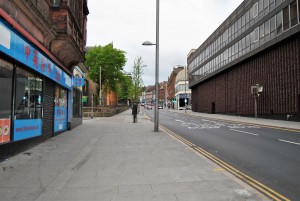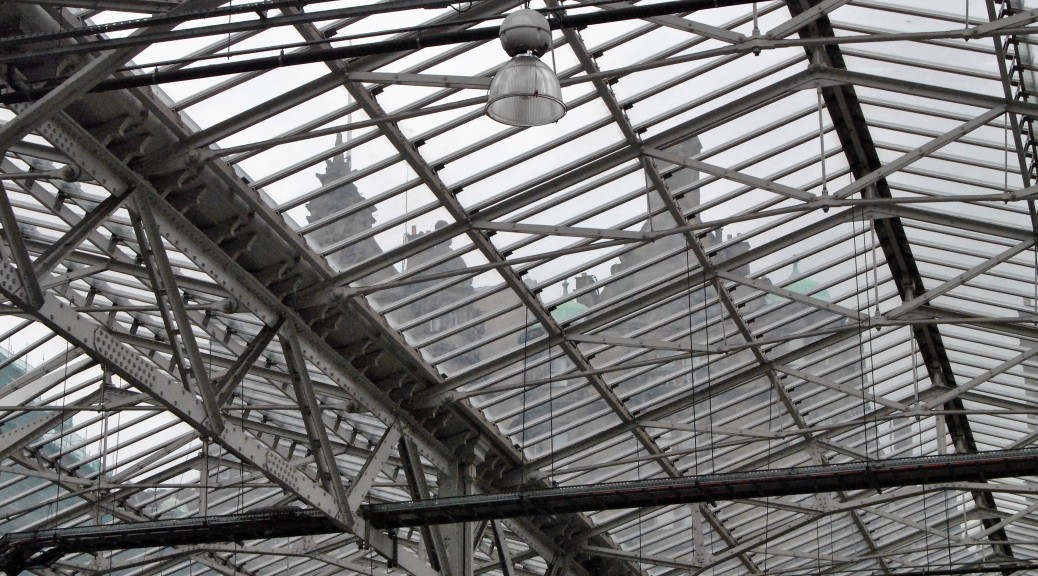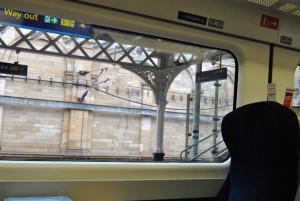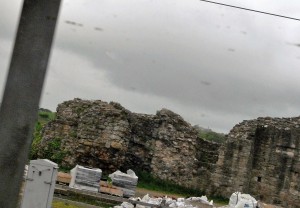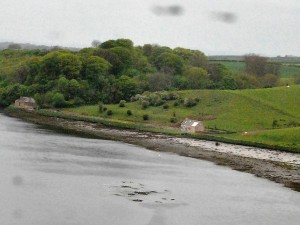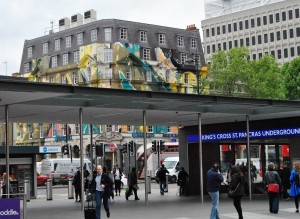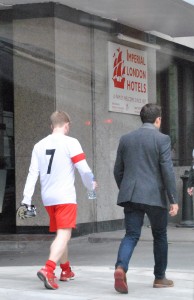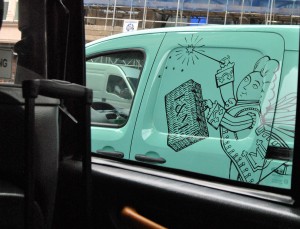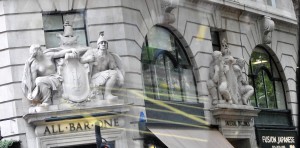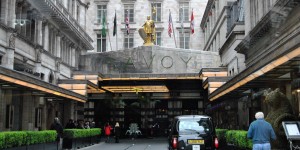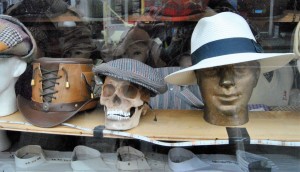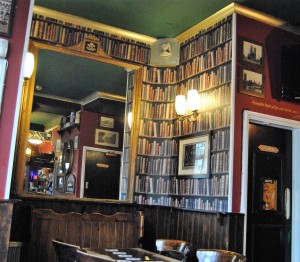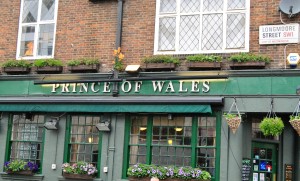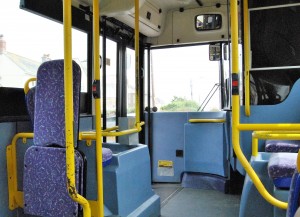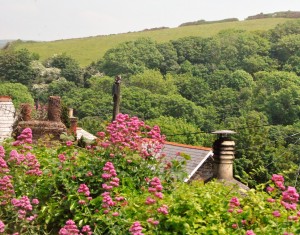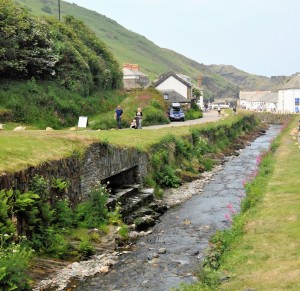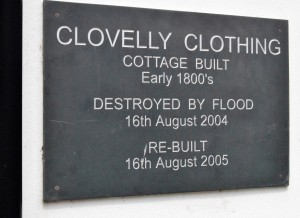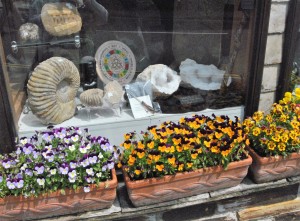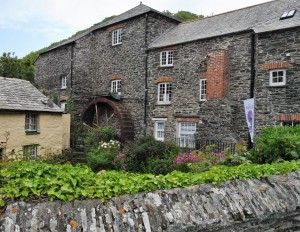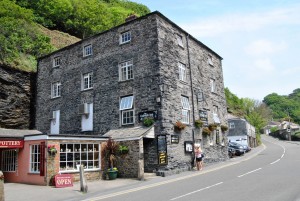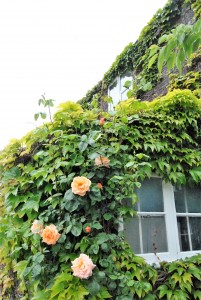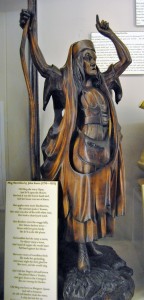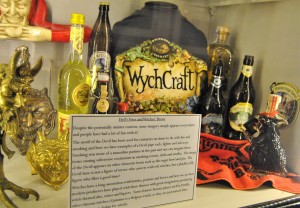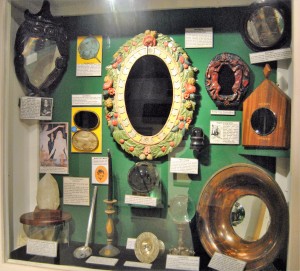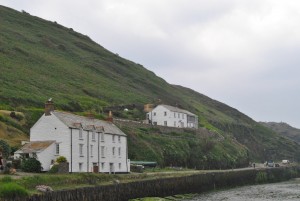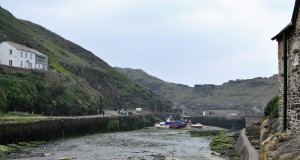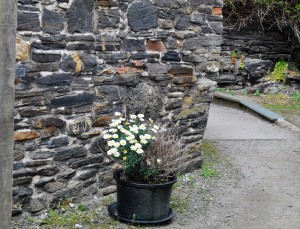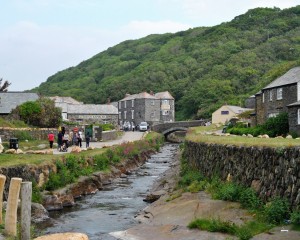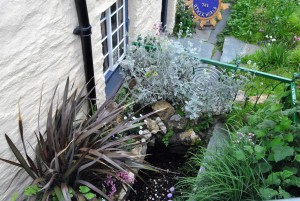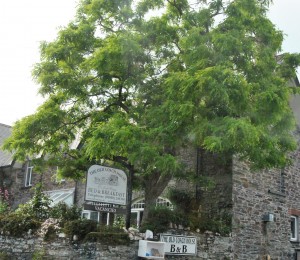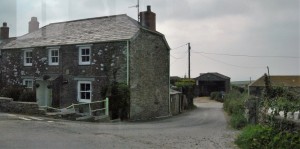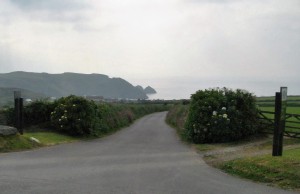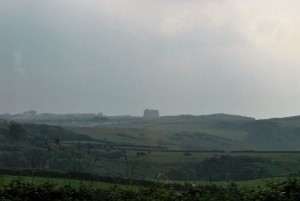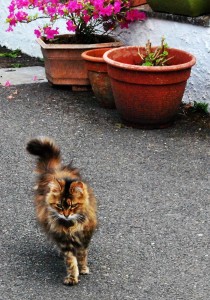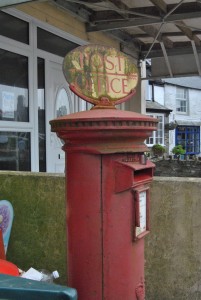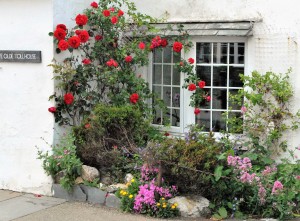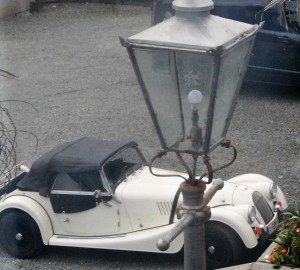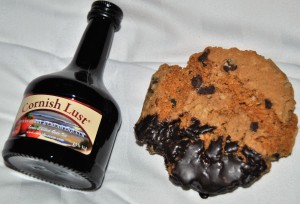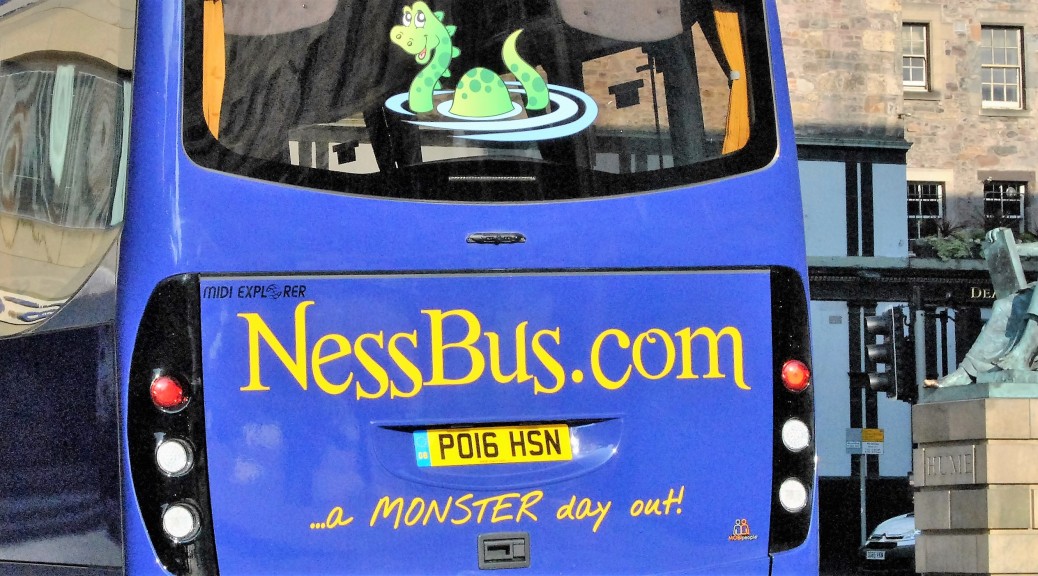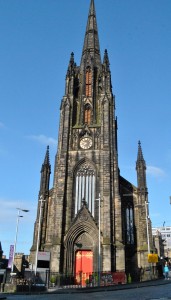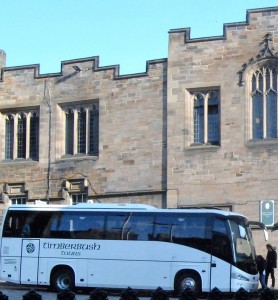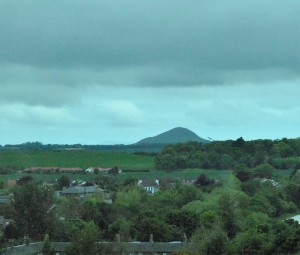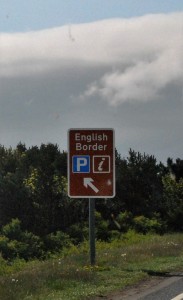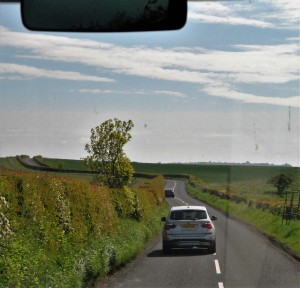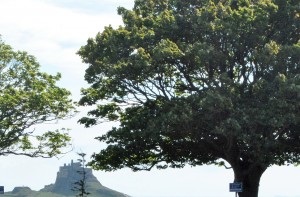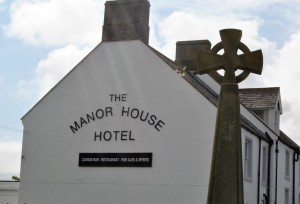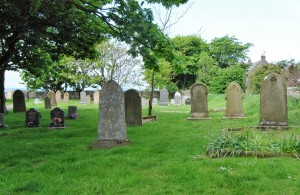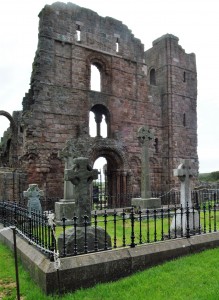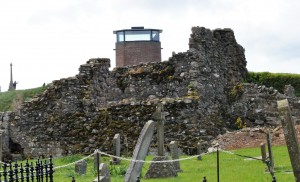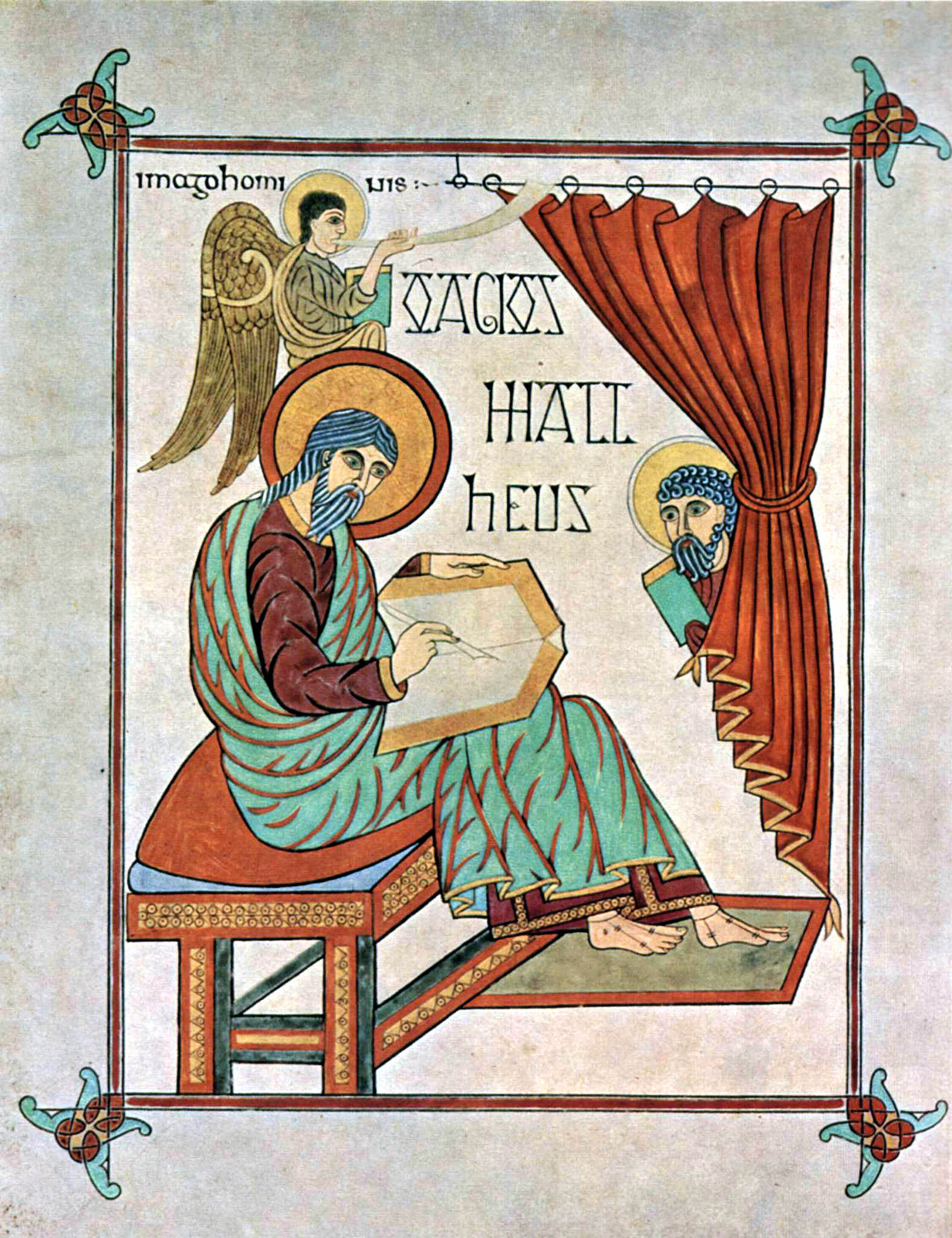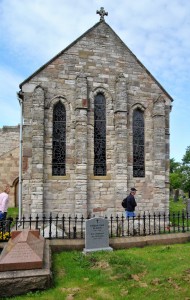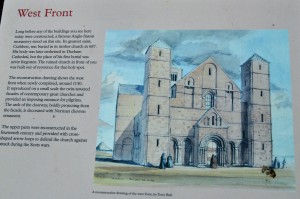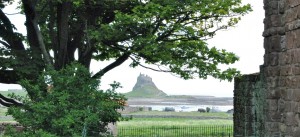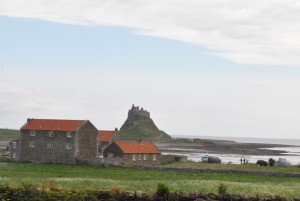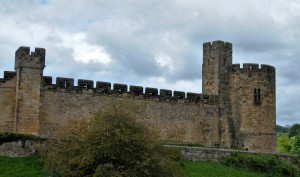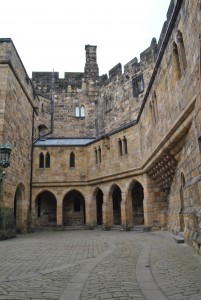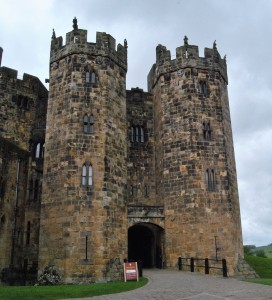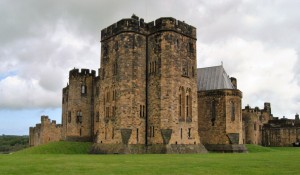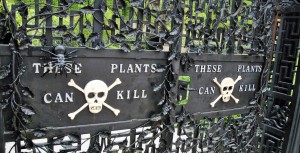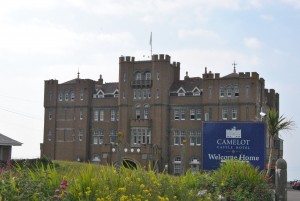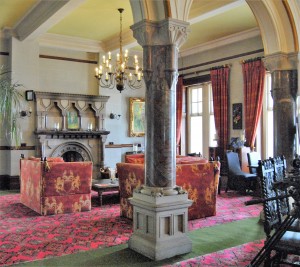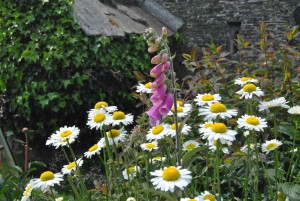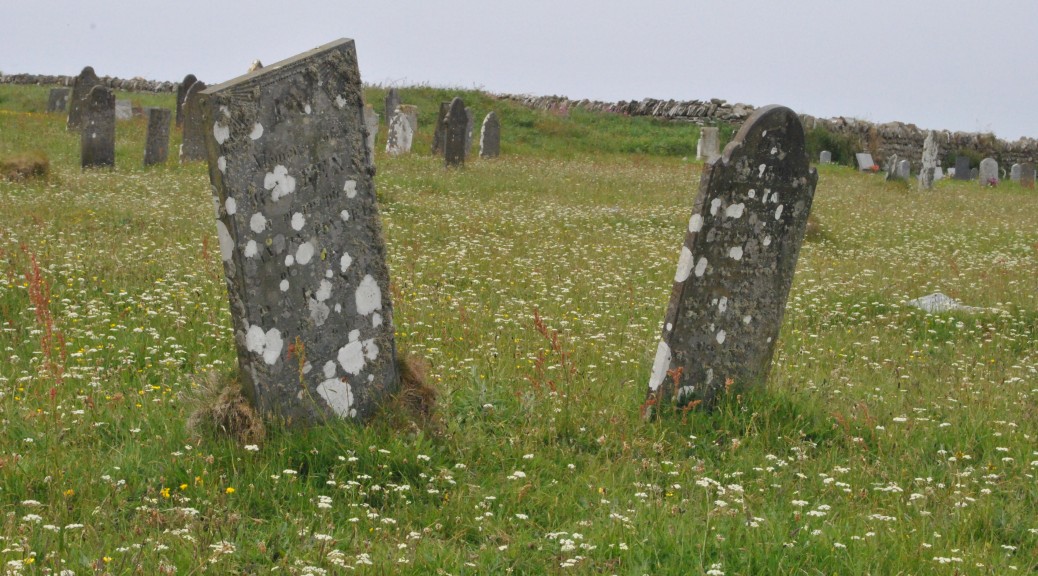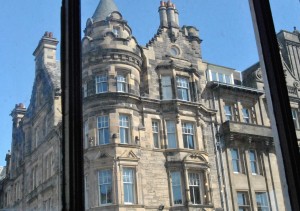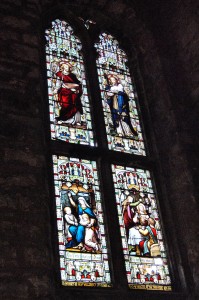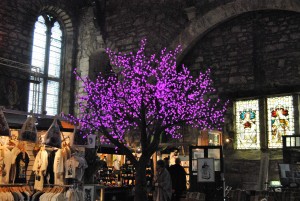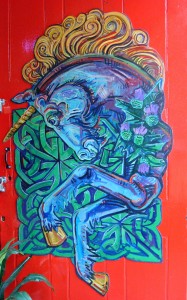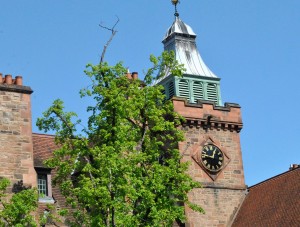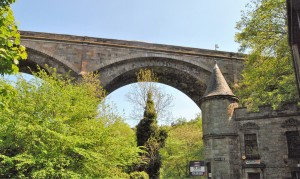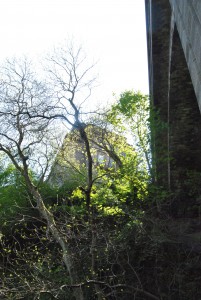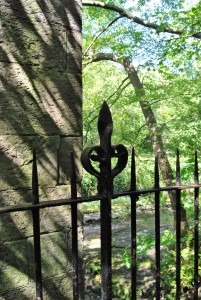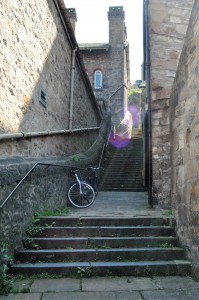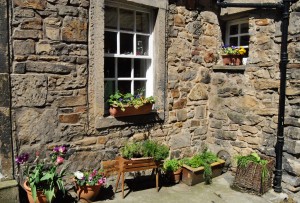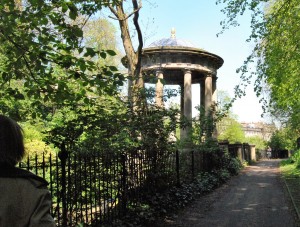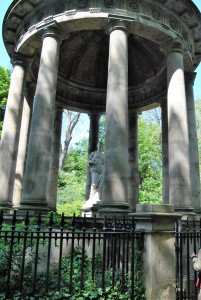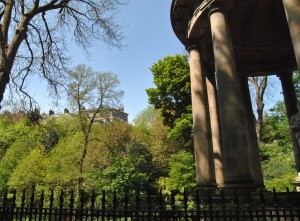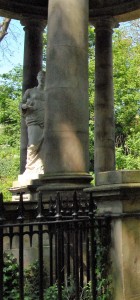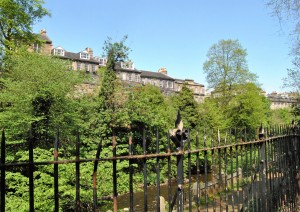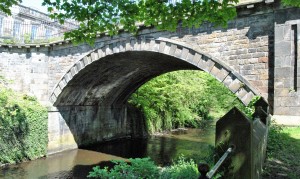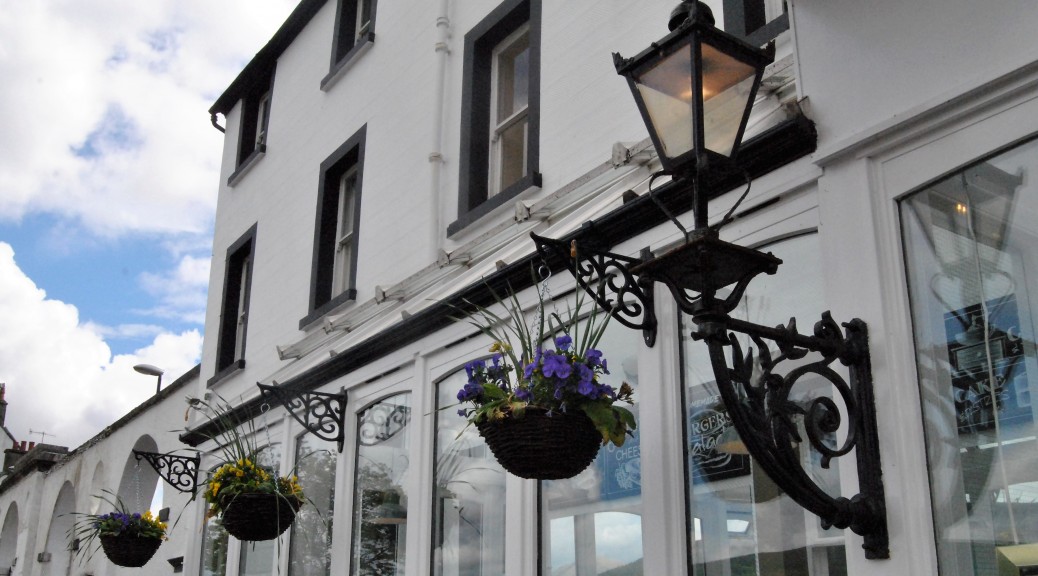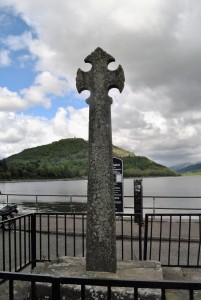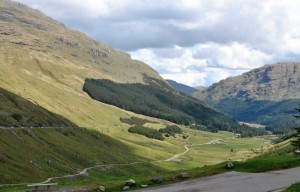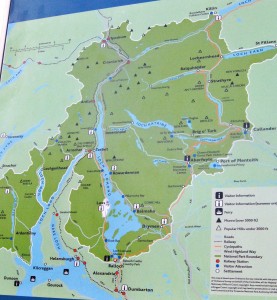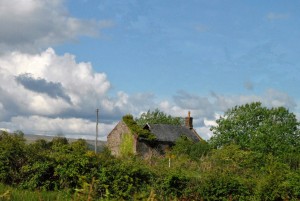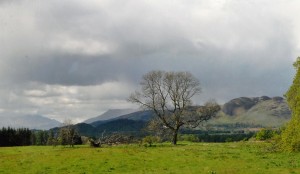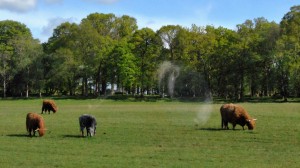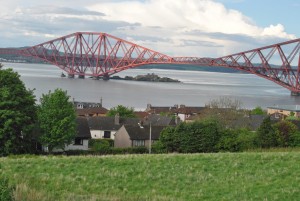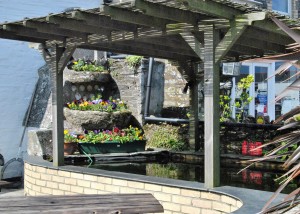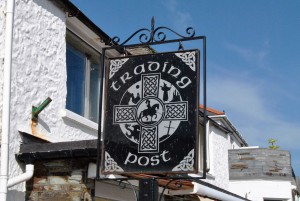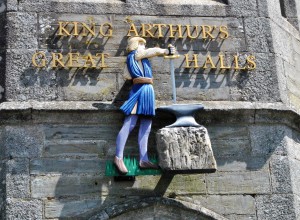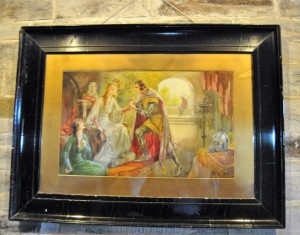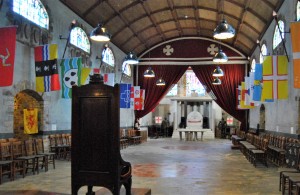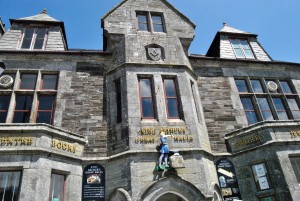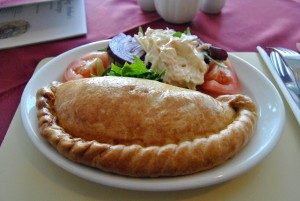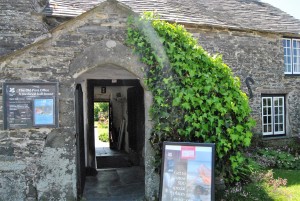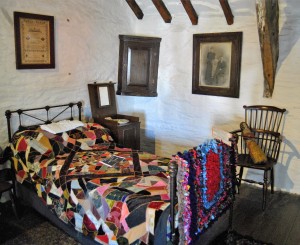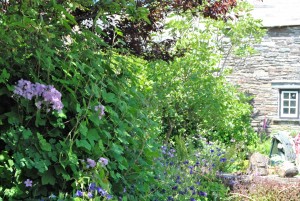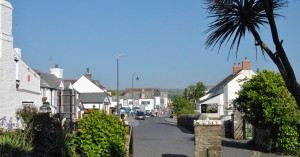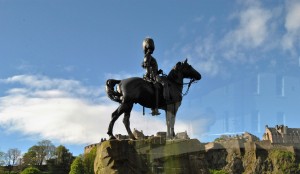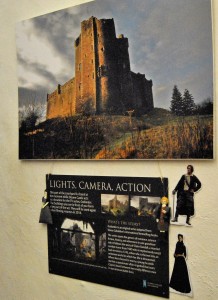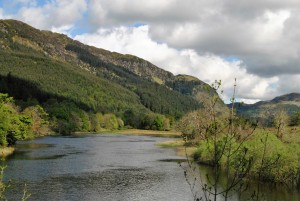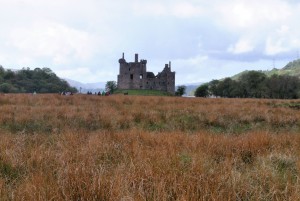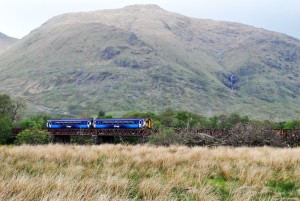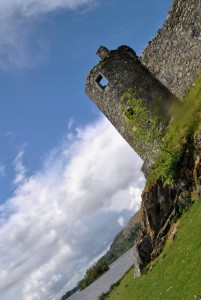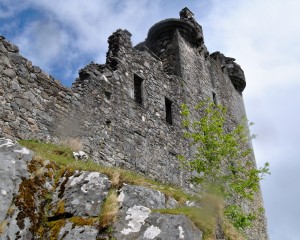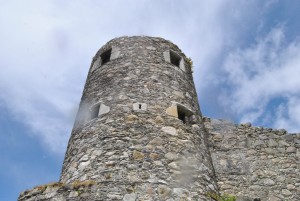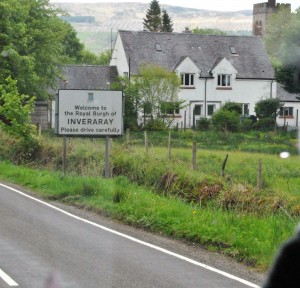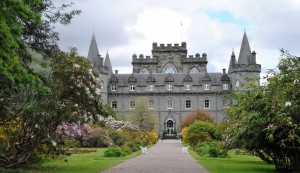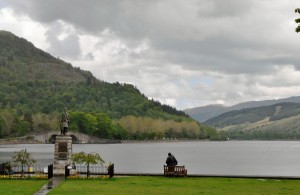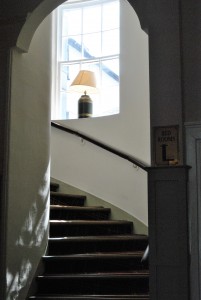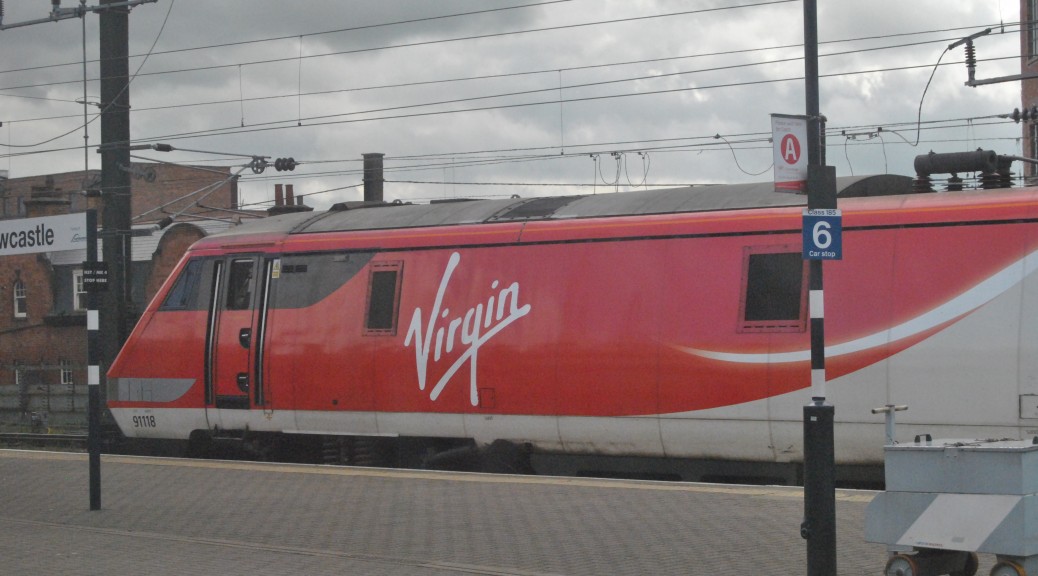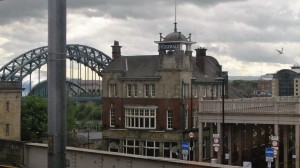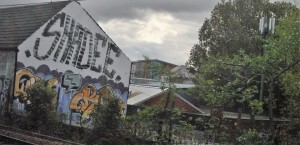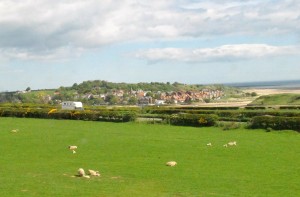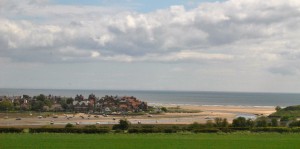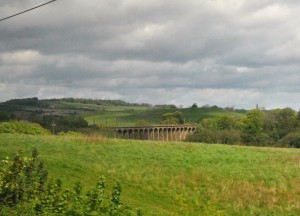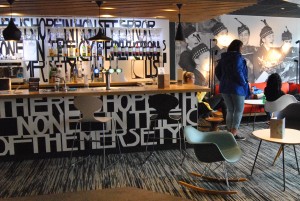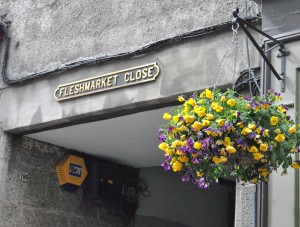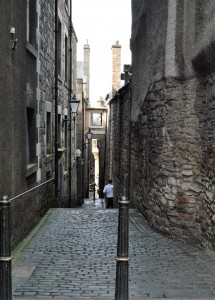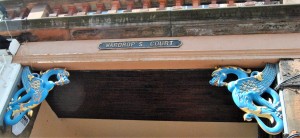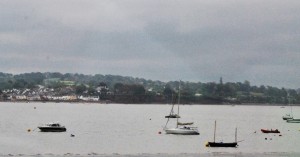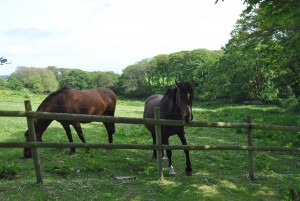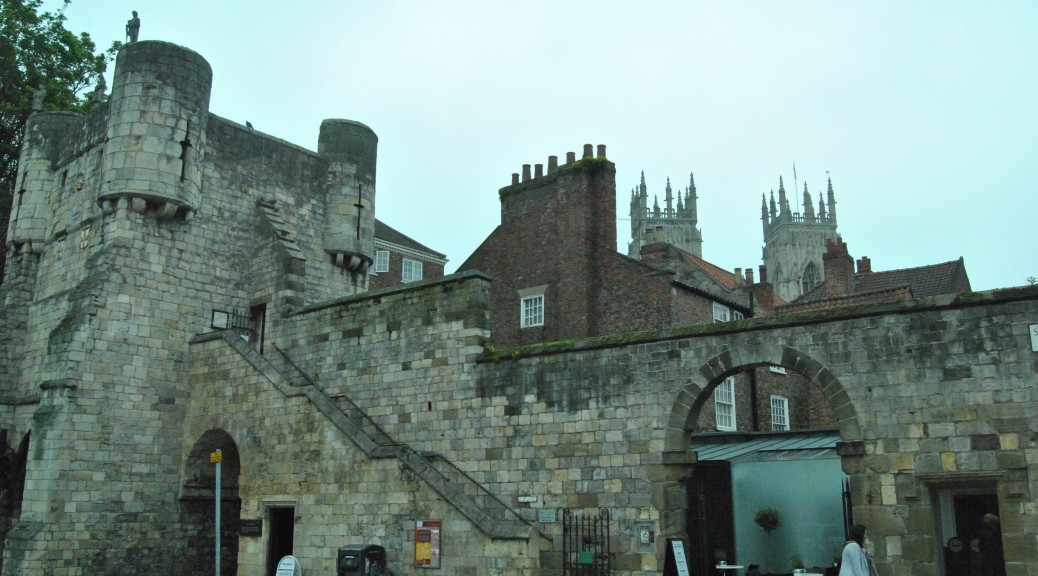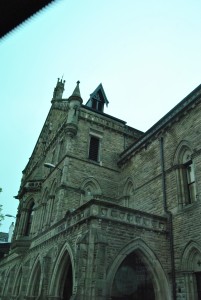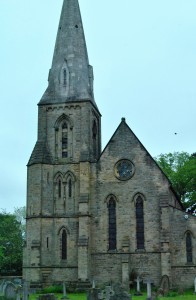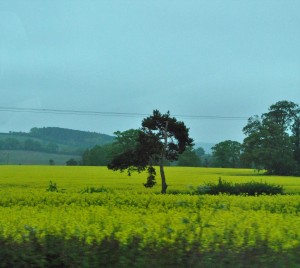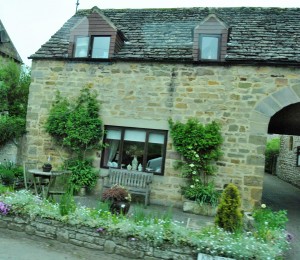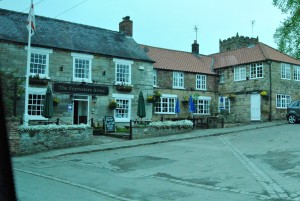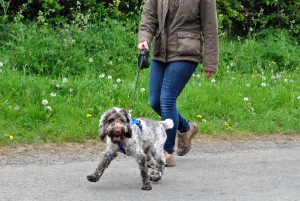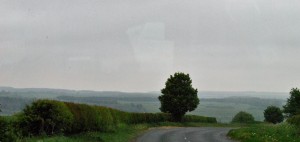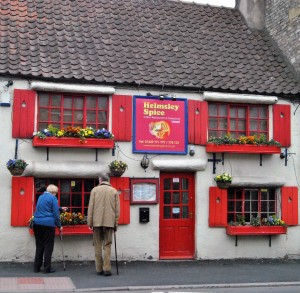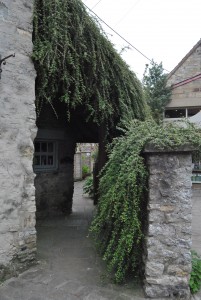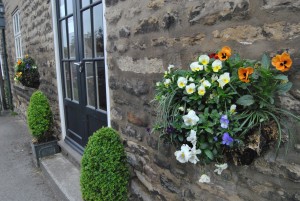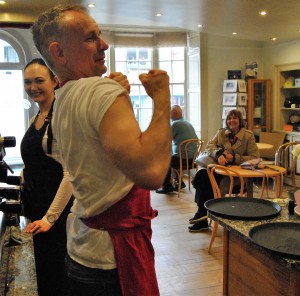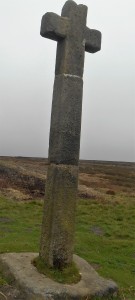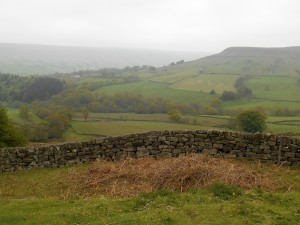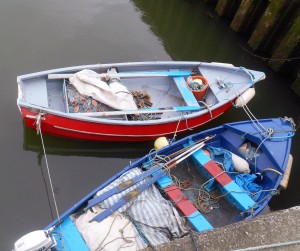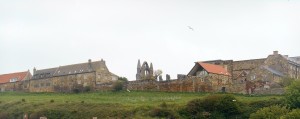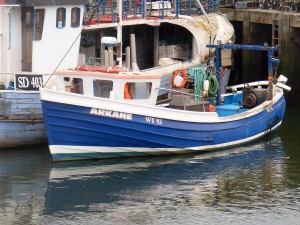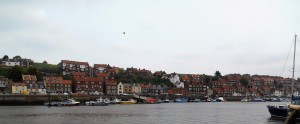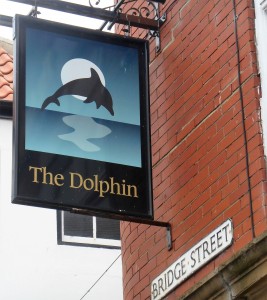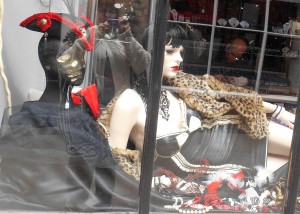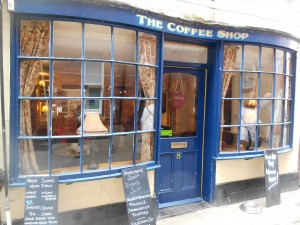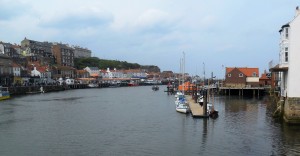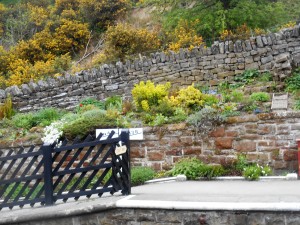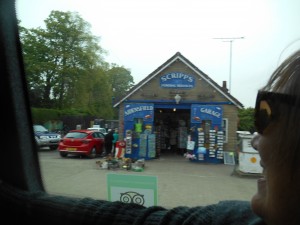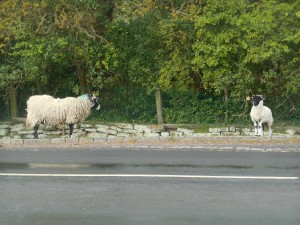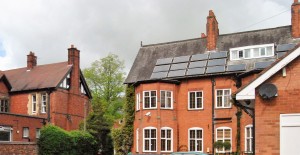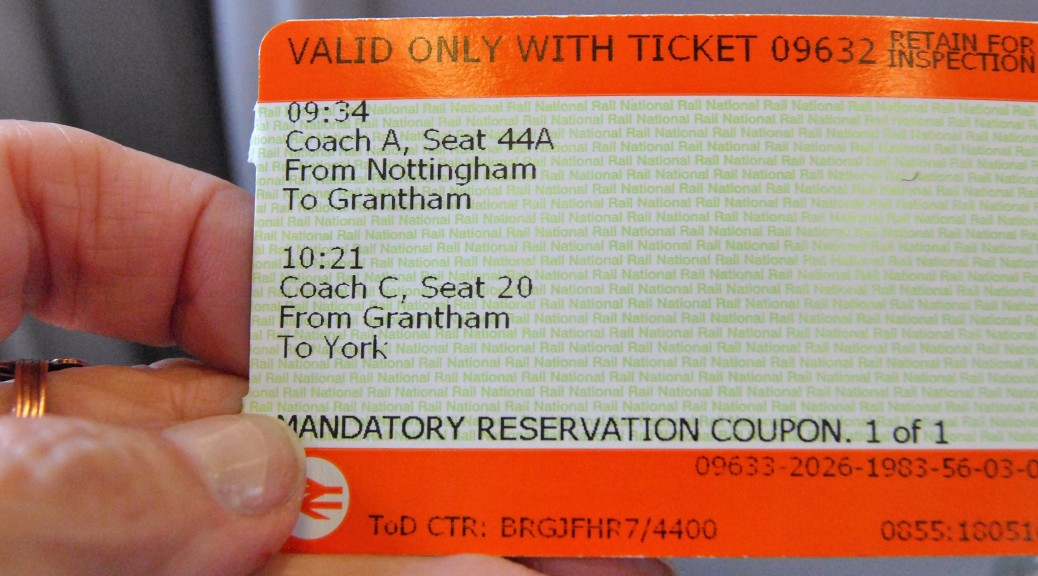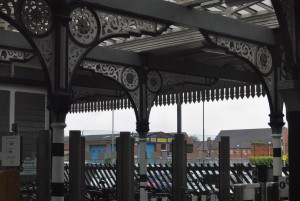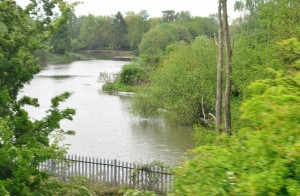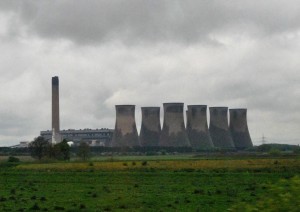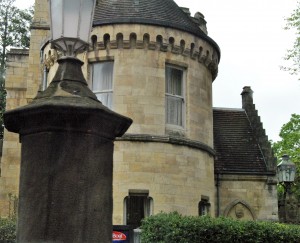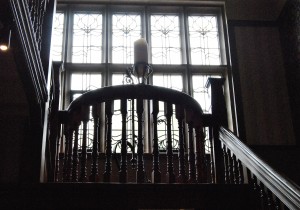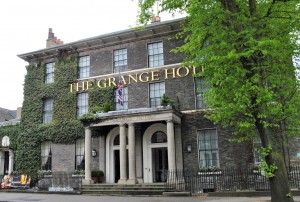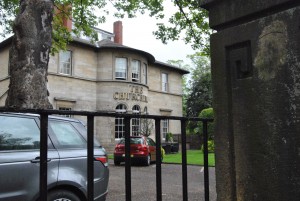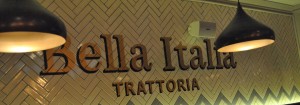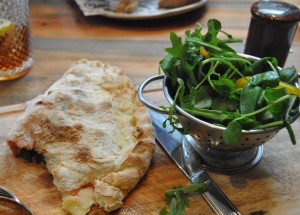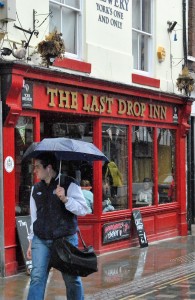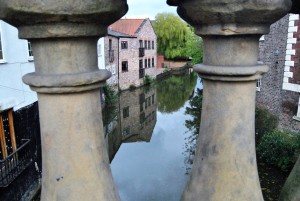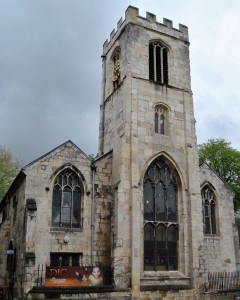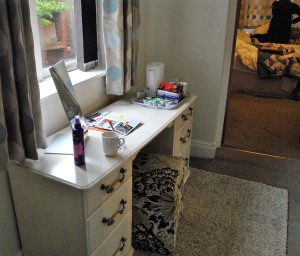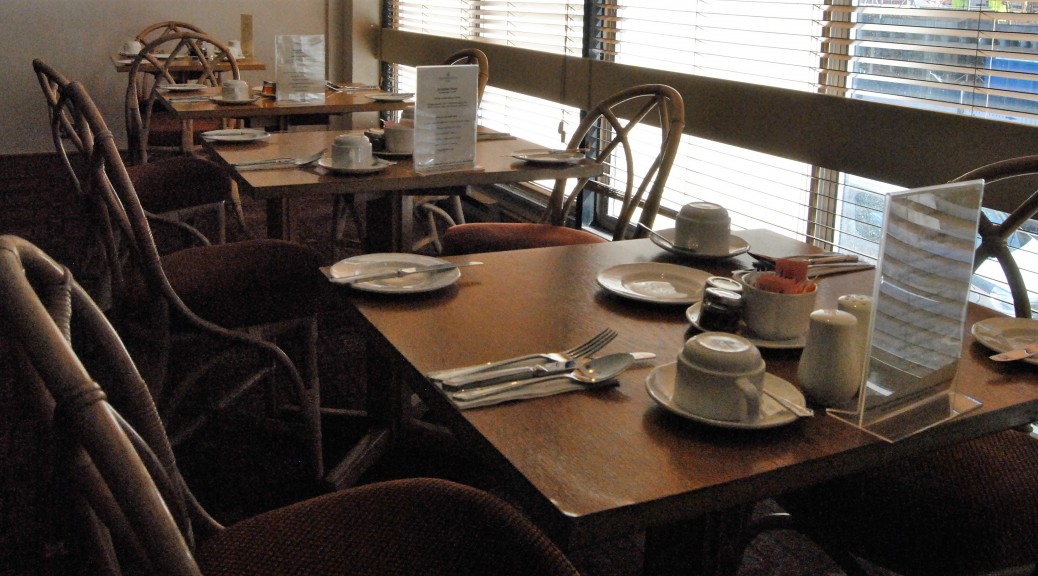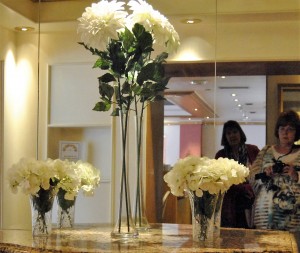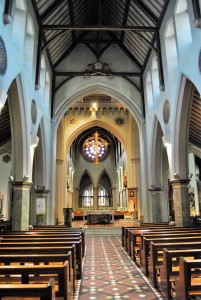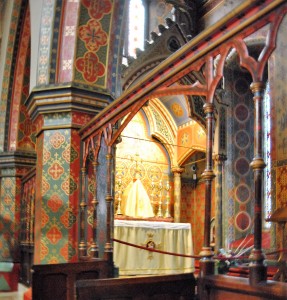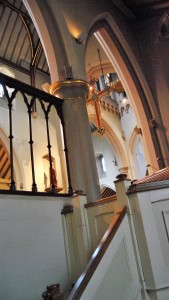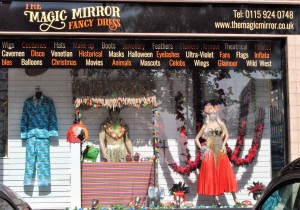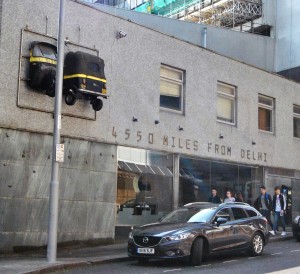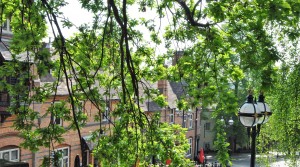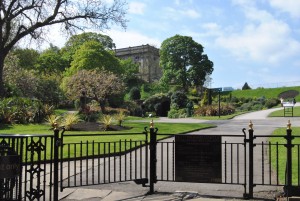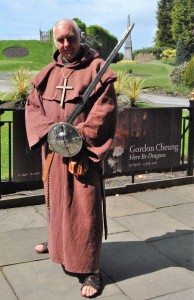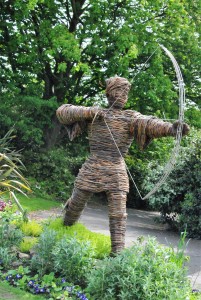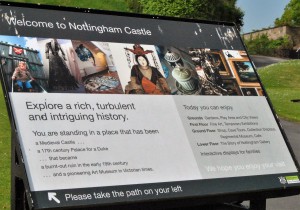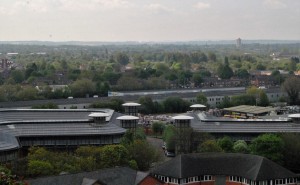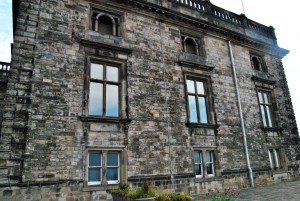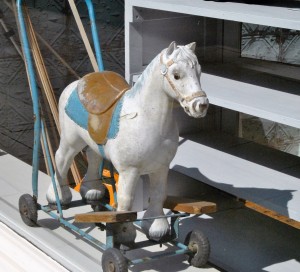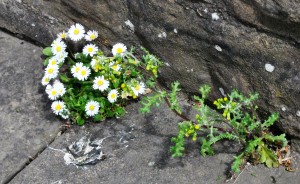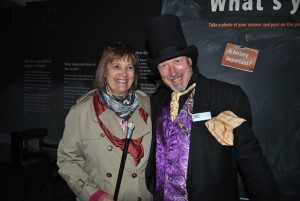
Susi makes a new friend at Edinburgh Castle
Hey there we’re on the London bound train 1 hr from Edinburgh and 3 plus to London…but back to Nottingham.
First let me tell you that this was my first visit and totally fell in love with the place…it’s an active, vibrant center and yet it’s friend and attractive not to mention full of well preserved historic areas.
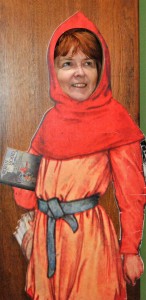
and me trying out a whole new style
These actually are the only pictures we got in the museum as there are no pictures allowed. The museum however has a long gallery of it’s permanent collection as well as special short terms exhibits.
Other exhibits includes a gallery on the 1831 riot–when the rioters actually burned the castle. interactive exhibits which includes objects from the period and animations along with first hand witness accounts.
There’s also exhibits on the city’s long history and some features on its best known resident Robin Hood.
And now some odds and ends on the way.



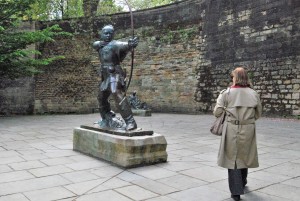
I’m not sure this one is very friendly Susi
YEP THAT’S THE FAMOUS statue of Robin Hood
By the way another legendary resident of Nottingham was Wm. Booth who founded the Salvation Army was born in an outlying district of the town. The poet Lord Bryan went to school here and inherited an estate (formerly a religious house) but due to lack of funds he spent little time there and eventuly sold the property.
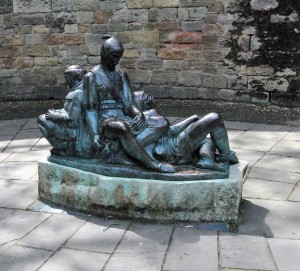
and what would Robin be w/o his Merrie Men
Nottingham was one of Britain’s first industrial towns and was the center of the riots that shook industry in the early 19th century aimed at the new industrial machinery.
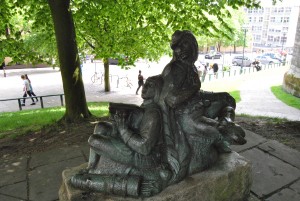
and then there’s more–you know how those outlaws are—lurking about everywhere
Nottingham Castle by the way is one of those places setting on the caves. In fact the castle covers a sheer labyrinth of man made caves and tunnels as well as the mandatory secret passage. Included amoung this gaggle of holes in the ground are King David’s legendary dungeon and the person I’d rather han g with, the Duke of New Castle’s wine cellar. Some of the caves date back to Medieval Times.
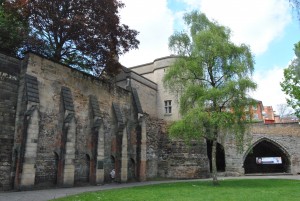
If you look at this picture you can see an entry way into one of the multiple entrances to the caves beneath the old castle walls.
One of the areas that is very famous is Mortimer’s Hole–the site of where the border lord and lover of Isabella (She’wolf, French origins and English Queen) who assisted her in killing her husband Edward II (the gay prince in Brave Heart—she the princess who met with Mel/Wallace).. But I’ll tell you more about that later—He was held here awaiting transfer to London where he was eventually drawn and quartered (just like Wallace)
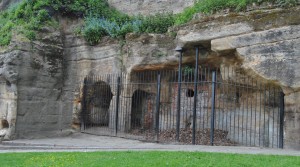
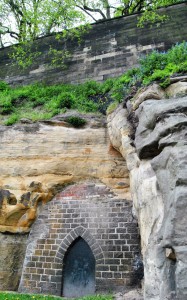
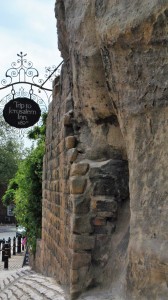
But we have arrived at our next destination and lunch as well

Ye Old Trip to Jeresulem
A pub and dining place.
Crusaders, caverns and ale casks.
Serving flagons of ale since 1189. You can stand outside and imagine when men were recruited to accompany a king of Merry Old UK to the Holy Lands and a little thing called the crusades—even my historically deprived Yank friends might have heard of this one Richard the Lion Heart.
Nottingham continued to grow rapidly, especially after 1845 when a great deal of land around it was released for building.

Inside we found customers of an appropriate time frame (just not ours)
Nottingham got its first gas street lighting in 1819. However like all towns in the early 19th century Nottingham was a dirty, unsanitary place. There was a cholera epidemic in 1833, which killed 330 people.
The back rooms here are actually caves as the back of the building is built into the Stone. Things scattered about the place are an old wooden model of a galleon that is said to be cursed and promises that anyone who cleans it will die a mysterious death. It’s now very grimy and enclosed in a glass case.
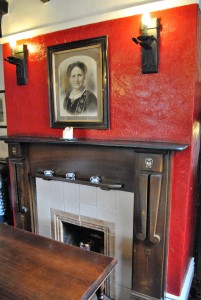
There’s a chair that is suppose to increase your hope of pregnancy (a bit too much of the ale and a walk home with someone seems more likely to accomplish that)
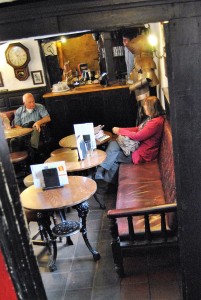
Susi Making MORE friends
In the early 18th Century Daniel Defoe described Nottingham as one of the most pleasant and most beautiful towns in England.
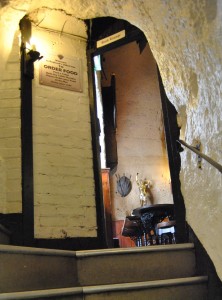
From the late 17th century salt glaze stoneware was made in Nottingham. In the 18th c. the hosiery industry boomed. There was also a lace industry although it was quite small.
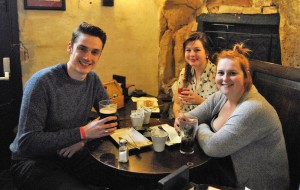
Ben and friends (sorry I’m bad with names–my dad’s name was Ben….so) that I met while exploring the old Trip–trip means a place to rest or sleep and was a resting place for men on their way to the Crusades…I think these guest haven’t any plans for the holy lands—but I may be wrong.
Georgian Nottingham grew rapidly. By the middle of the century the population had passe 10,000. By 1801 it exceeded 28,ooo. By the standrads of the time nottingham was a large and important town;
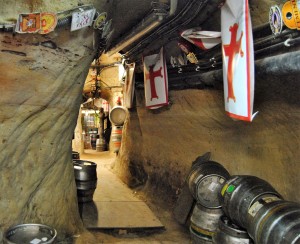
Then for the cavements–I had arranged a visit ahead of time (they collect a few bob for charity) and we went down into the area where they keep their kegs and where history was made. This area use to be where ale was brewed for the castle and there were passageways from here up to the earlier castle on the hill.
In the early 12th century Isabella had, with the assistance of her lover Mortimer—whom I have mentioned before–killed her husbband King Edward II amd proclaimed her son (Edward III) king with her regient. This situation went on until in 1330. Isabela and Mortimer were in Nottingham and her son Edward with several followers entered the castle by entering the passageway in this basement–now walled off and arrested Roger Mortimer and though his mother cried for his life Mortimer was later transported to London and executed. By doing this Edward successfully ended the regency and began his reign.

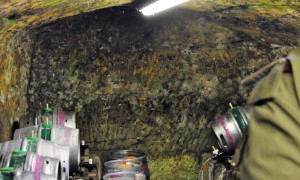
The walled up entrance to the castle passages.
Then on to our next stop a much newer place…

THE GALLERY OF JUSTICE
where we discovered Nottingham’s horrible history.
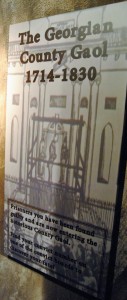
As we walked on a journey through time to explore
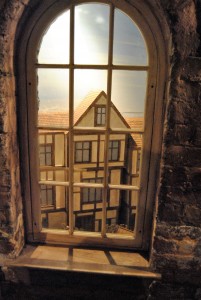
original prison cells. caves, dungeons and courtrooms.

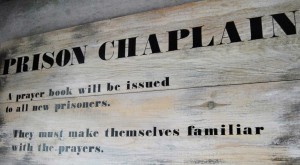

THEN ON THE ROAD (OR RATHER SIDEWALKS) AGAIN;
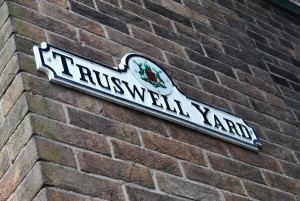
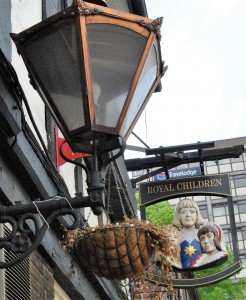
and our last planned visit:
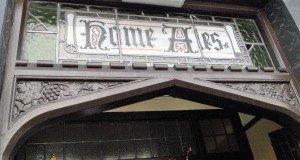
The Salutation: A rambling old place (1240) which got its name from the Archangel Gabriel salutating the Virgin Mary–an ancient sign used for drinking places.
Nottingham for the well-to-do it was elegant and genteel (althought always, there were poor people) In the 18th century there was a piped water supply although it was expensive and not many people could afford it. From the 1760’s oil lamps lit the streets. The first theater in Nottingham was built in 1760 and a general hospital in 1782.

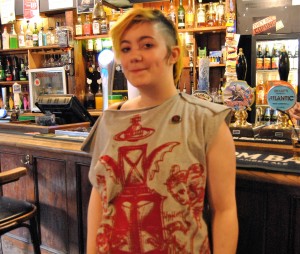
Our intrepid bar tender

and her re-enforcement
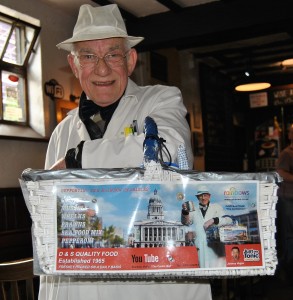
and this fish monger about the pub selling prawns and the like
and a gentleman from the past just passing through on his way to a meet up with some spirits

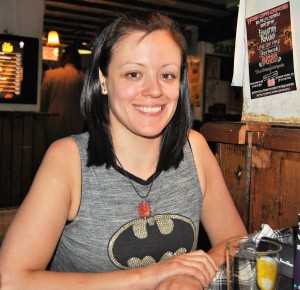
Lyndsey From Nottingham Pub
We met her when we first entered and before the evening was over we were at a table talking and laughing and drinking a few….whatevers. Susi did her palm reading and me I just babbled as usual. Lyndsey and the two of us plus a third lady who was alone but whom I kidnapped and added to the party had a great evening, discussing blogs, life and what ever else came into our lives—it was a bit of fun and friendship in a place far away from our original sites and yet finding friends and common ground which just made our trip.
Lyndsey’s also has a blog—and I’m adding it to this one as it’s on Nottingham (warning it has a picture of me)–
“Lyndsey Davies”
http://wadnderlynz.com/2016/05/23/when-in-nottingham/
check it out it’s a great chronicle of the lives and loves, the down and gritty living from destination to destinations–the things you forgot and the things you wish you had.
LOVE TO LYNZ…..FROM THE DIVA
See you all tomorrow
